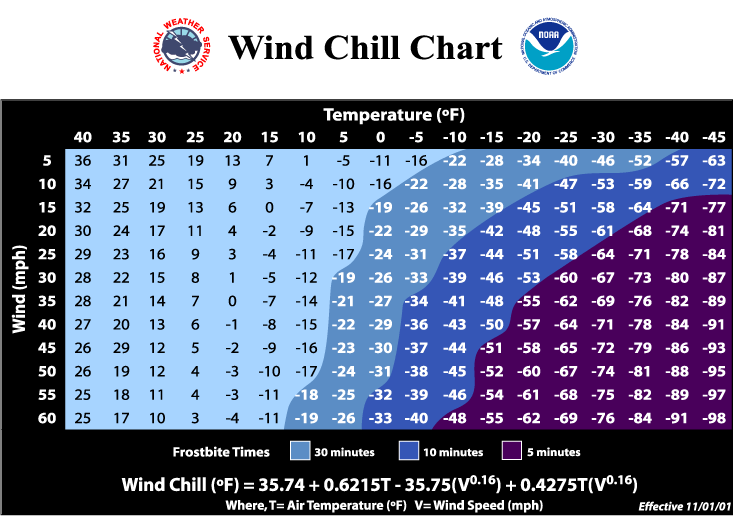Frostbite can be a serious risk for Iowans during the winter. Here's how to prepare
Low winter temperatures create concerns for frostbite and hypothermia for Iowans. When the temperatures start to dip, you need to take extra steps to keep yourself safe outdoors.
How does frostbite happen?
Frostbite occurs when skin and underlying tissues freeze, according to the Mayo Clinic. The most common cause of frostbite is exposure to cold-weather conditions. But it can also be caused by direct contact with ice, freezing metals or very cold liquids.
At what temperature can you get frostbite?
Frostbite is skin damage caused by freezing temperatures below 32 degrees Fahrenheit, according to Cleveland Clinic. However, you’re more likely to get frostbite in any situation that leads to prolonged cold exposure.
How fast can frostbite happen?

According to NWS, the combination of wind and low temperature in winter can be deadly.
Wind chill index helps you determine when dangerous conditions develop that could lead to frostbite or hypothermia.
The calculation utilizes wind speed in miles per hour and temperature in degrees Fahrenheit. For example, a temperature of minus 5 degrees occurring with a 20 mph wind gives a wind chill near minus 30 degrees.
This means that your body will lose heat at the same rate as it would if the air temperature were minus 30 degrees with no wind. Wind chill values near minus 25 degrees mean that frostbite is possible within 15 minutes.
How can you prevent frostbite?
Follow these tips from the Mayo Clinic to keep yourself safe from frostbite when outdoors:
Limit the time you're outdoors in cold, wet or windy weather.
Dress in several layers of loose, warm clothing. Air trapped between the layers of clothing acts as insulation against the cold. Wear windproof and waterproof outer garments to protect against wind, snow and rain. Choose undergarments that wick moisture away from your skin. Change out of wet clothing, particularly gloves, hats and socks.
Wear a hat or headband that fully covers your ears.
Wear mittens, rather than gloves.
Early signs of frostbite include red or pale skin, prickling, and numbness. Seek warm shelter immediately if you notice any of those indicators.
When traveling in cold weather, carry emergency supplies and warm clothing in case you become stranded.
Don't drink alcohol if you plan to be outdoors in cold weather. Alcoholic beverages cause your body to lose heat faster.
Eat well-balanced meals, and stay hydrated. Doing this even before you go out in the cold will help you stay warm.
Keep moving. Exercise can get the blood flowing and help you stay warm. But don't do it to the point of exhaustion.
What are the stages of frostbite?
Frostnip is a mild form of frostbite. Continued exposure leads to numbness in the affected area. As your skin warms, you may feel pain and tingling. Frostnip doesn't permanently damage the skin.
Superficial frostbite appears as reddened skin that turns white or pale. Your skin may begin to feel warm — a sign of serious skin involvement. If you treat frostbite with rewarming at this stage, the surface of your skin may appear mottled. And you may notice stinging, burning and swelling. A fluid-filled blister may appear 12 to 36 hours after rewarming the skin.
Deep (severe) frostbite affects all layers of the skin, including the tissues that lie below. Your skin turns white or bluish gray and you may experience numbness, losing all sensation of cold, pain or discomfort in the affected area. Joints or muscles may no longer work. Large blisters form 24 to 48 hours after rewarming. Afterward, the area turns black and hard as the tissue dies.
— Information from the Mayo Clinc
Hypothermia is also a risk when outdoors in cold weather. Watch for these warning signs
Confusion or sleepiness
Slowed, slurred speech
Shallow breathing
Weak pulse or low blood pressure
Poor control over body movements or slow reactions
— Information from MercyOne
How do you prevent hypothermia?
Get to warm shelter
Remove clothes if they are wet
Warm the center of the body first: chest, neck, head, groin
Use electric blankets if available, or skin-to-skin contacts
Drink warm beverages
— Information from MercyOne
This article originally appeared on Des Moines Register: Knowing frostbite symptoms, stages can save Iowans' lives this winter

